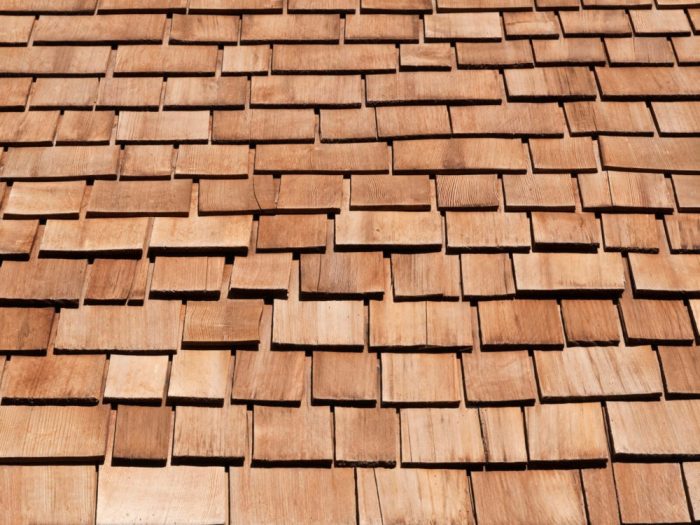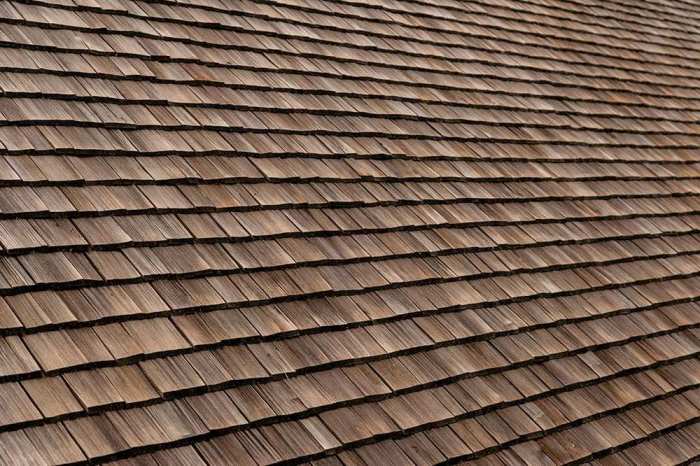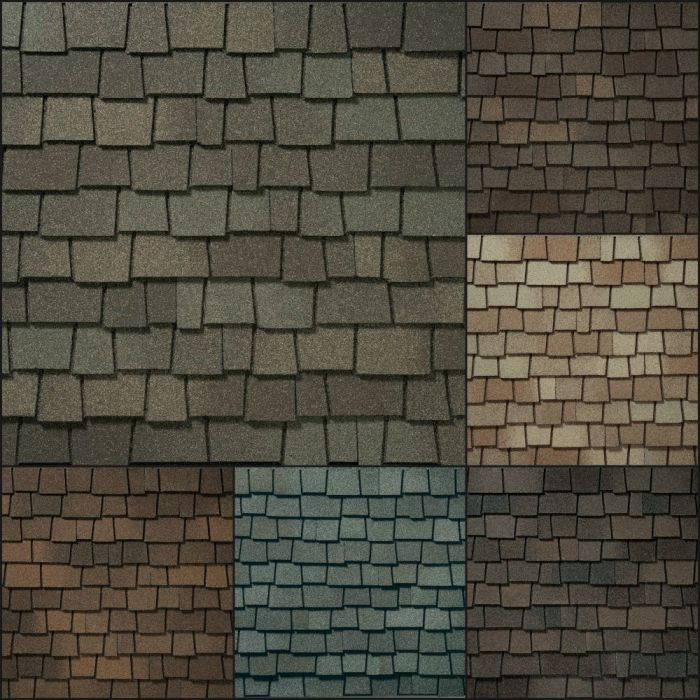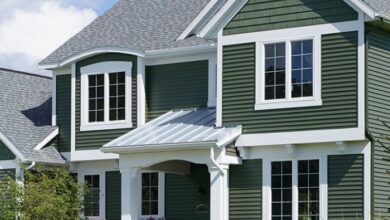Shaker Shingles A Complete Guide
Shaker shingles: These aren’t your average roofing material. Born from the simplicity and practicality of Shaker communities, these shingles boast a unique history, aesthetic, and lasting appeal. From their humble beginnings to their modern resurgence, we’ll delve into everything you need to know about shaker shingles, exploring their origins, manufacturing, installation, and environmental impact. This comprehensive guide will equip you with the knowledge to make informed decisions about this timeless roofing choice.
We’ll trace the evolution of shaker shingles, from their traditional wood construction to modern interpretations. We’ll compare them to other roofing materials, examining their lifespan, cost-effectiveness, and aesthetic versatility. Discover the secrets to proper installation and maintenance, ensuring your shaker shingle roof remains a stunning and durable feature for years to come. We’ll also address the environmental considerations, helping you choose a sustainable roofing solution that aligns with your values.
Shaker Shingle History and Origins

Shaker shingles, renowned for their distinctive beauty and longevity, boast a rich history deeply intertwined with the unique craftsmanship and communal lifestyle of the Shaker religious movement. Their development wasn’t a singular event, but rather an evolution shaped by necessity, practicality, and the Shakers’ unwavering commitment to simplicity and functionality. Understanding their history reveals a fascinating connection between religious principles and architectural innovation.
The development of Shaker shingles is inextricably linked to the Shaker communities themselves. These religious groups, known formally as the United Society of Believers in Christ’s Second Appearing, established numerous settlements across the United States beginning in the 18th century. Their emphasis on simple living and communal work fostered a culture of self-sufficiency, leading them to develop highly skilled crafts, including woodworking. This expertise translated directly into their construction methods, resulting in buildings known for their durability and elegant simplicity. The need for durable, weather-resistant roofing materials in often harsh climates further propelled the development of their unique shingle style.
Shaker Shingle Timeline
The evolution of Shaker shingles can be traced through several key periods:
Early Development (1780s-1840s): The Shakers began experimenting with wood shingle designs, focusing on efficiency and longevity. Early shingles were likely thicker and less refined than later iterations. This period saw the development of basic techniques and the establishment of woodworking practices within Shaker communities.
Refinement and Standardization (1840s-1880s): As Shaker communities flourished, woodworking skills improved, leading to more refined and standardized shingle production. The characteristically thin, tapered shape began to emerge, reflecting a focus on minimizing waste and maximizing weather resistance. This period also saw the wider adoption of the shingle style across Shaker settlements.
Decline and Legacy (1880s-Present): The decline of Shaker communities in the late 19th and early 20th centuries led to a decrease in the production of Shaker shingles. However, their enduring beauty and quality ensured their legacy continued. Today, Shaker shingles are highly sought after, often used in restoration projects and new construction where historical accuracy or a distinctive aesthetic is desired.
Comparison of Shaker Shingles with Other Roofing Materials
The following table compares Shaker shingles to other common roofing materials:
| Material | Lifespan (Years) | Cost (Relative) | Aesthetic |
|---|---|---|---|
| Shaker Shingles | 50-100+ (with proper maintenance) | High | Rustic, elegant, historical |
| Asphalt Shingles | 15-30 | Low | Common, widely available styles |
| Slate Shingles | 75-100+ | Very High | Elegant, durable, classic |
Shaker Shingle Materials and Manufacturing

Shaker shingles, renowned for their durability and aesthetic appeal, rely on a specific combination of materials and a precise manufacturing process. Understanding these elements is key to appreciating the longevity and craftsmanship inherent in these iconic shingles. This section delves into the traditional and modern methods used in their creation, highlighting the evolution of techniques over time.
Traditionally, Shaker shingles were crafted primarily from high-quality, naturally durable wood. The choice of wood significantly impacted the shingle’s lifespan and aesthetic characteristics. The specific species selected varied based on regional availability and desired properties.
Traditional Shaker Shingle Materials
White cedar, for example, was a favored choice in New England due to its inherent resistance to rot and decay. Its light color and fine grain also contributed to the shingles’ characteristic appearance. Other woods, such as Eastern white pine and red cedar, were also employed, each offering slightly different properties in terms of durability, color, and workability. The selection process emphasized straight-grained, knot-free lumber to ensure consistent quality and minimize the risk of splitting or warping during the manufacturing process. The wood was carefully seasoned to reduce moisture content, a crucial step in preventing future shrinkage and cracking.
Traditional Shaker Shingle Manufacturing Process
The traditional manufacturing process was largely manual, relying on skilled artisans and hand tools. This involved several key steps:
- Log Selection and Milling: Straight, sound logs were selected and then milled into planks of the appropriate thickness. This process ensured that the final shingles would be uniform in size and thickness.
- Shaping: Using specialized hand tools like froes and drawknives, skilled craftspeople shaped the planks into individual shingles. This required precision and a keen eye for detail to achieve the desired profile and dimensions.
- Finishing: Once shaped, the shingles were often hand-planed to smooth the surface and ensure a consistent thickness. Some manufacturers applied a natural oil or preservative to enhance weather resistance.
Modern Shaker Shingle Manufacturing Techniques
Modern manufacturing incorporates machinery to increase efficiency and production volume. While some manufacturers still utilize hand-crafted techniques for high-end products, most modern production involves automated processes. These processes often utilize advanced machinery for cutting, shaping, and planing, resulting in a higher degree of uniformity and potentially lower costs. However, the focus on quality wood and careful attention to detail remain critical aspects of the process, regardless of the manufacturing method.
Comparison of Traditional and Modern Manufacturing
| Feature | Traditional Manufacturing | Modern Manufacturing |
|---|---|---|
| Production Rate | Slow, labor-intensive | Fast, high-volume |
| Cost | High | Generally lower |
| Uniformity | Slight variations possible | High degree of uniformity |
| Skill Level | Requires highly skilled artisans | Requires skilled operators and technicians |
| Environmental Impact | Potentially lower environmental impact due to smaller scale | Potentially higher environmental impact due to higher energy consumption |
Shaker Shingle Manufacturing Flowchart
The following flowchart visually represents the steps involved in creating a Shaker shingle, from raw material to finished product.
Imagine a flowchart starting with a box labeled “Log Selection and Milling,” leading to a box labeled “Shaping (Traditional: Hand Tools; Modern: Machinery),” which then connects to a box labeled “Finishing (Traditional: Hand Planing; Modern: Automated Planing),” ultimately culminating in a box labeled “Finished Shaker Shingle.”
Shaker Shingle Aesthetics and Design
Shaker shingles possess a unique aesthetic appeal rooted in the Shaker philosophy of simplicity, functionality, and craftsmanship. Their understated elegance distinguishes them from more ornate roofing materials, offering a timeless and versatile design element for a wide range of architectural styles. The subtle variations in size, shape, and color contribute to their overall visual richness and texture.
Shaker shingle aesthetics are defined by their clean lines and natural texture. The shingles themselves are relatively small, allowing for a detailed and varied surface pattern. This creates a visually interesting roof that’s both elegant and understated. The inherent simplicity of the design allows the natural beauty of the wood to take center stage.
Key Aesthetic Features of Shaker Shingles
The key aesthetic features of Shaker shingles center around their unassuming yet refined appearance. Their rectangular or slightly tapered shape, coupled with their relatively small size, contributes to the distinctive texture of a Shaker shingle roof. The subtle variations in wood grain and color further enhance this effect, creating a naturally varied and visually appealing surface. The lack of overt ornamentation underscores the Shaker philosophy of simplicity and functionality, making the shingles adaptable to various architectural styles.
Variations in Size, Shape, and Color of Shaker Shingles
Shaker shingles exhibit variations in size and shape, although they generally maintain a rectangular or slightly tapered profile. Sizes typically range from approximately 4 to 8 inches in length and 2 to 4 inches in width, though these dimensions can vary depending on the manufacturer and the specific design requirements. The color palette is largely influenced by the type of wood used, typically ranging from light tans and grays in cedar to darker browns and reddish hues in redwood. The natural weathering process further affects the color, creating a beautiful patina over time. Custom coloring is also possible, allowing for more creative applications and color coordination with the overall house design.
Shaker Shingles in Different Architectural Styles
Shaker shingles’ versatility allows for seamless integration into a variety of architectural styles. Their understated elegance complements both traditional and contemporary designs. They are particularly well-suited for homes inspired by Shaker architecture itself, offering a historically accurate and visually appealing roofing solution. However, their adaptability extends beyond this, making them a suitable choice for Cape Cod, Colonial Revival, and even some modern farmhouse styles. The clean lines and natural texture of the shingles work well with both simple and more elaborate architectural details.
Visual Description of a House Roof Featuring Shaker Shingles
Imagine a farmhouse-style home with a gently sloping roof covered in cedar Shaker shingles. The shingles are a warm, medium brown, exhibiting a subtle variation in shade due to natural weathering. The texture is rough yet refined, with the individual shingles overlapping slightly to create a visually appealing pattern. The overall impression is one of rustic charm and understated elegance. The roof appears both durable and inviting, reflecting the warmth and simplicity of the Shaker aesthetic. The natural color of the wood complements the cream-colored siding and dark brown window frames of the house, creating a harmonious and pleasing visual composition. The light catches the varied textures and creates subtle shadows, highlighting the craftsmanship of the installation and the inherent beauty of the natural wood.
Shaker Shingle Installation and Maintenance

Installing and maintaining a Shaker shingle roof requires careful attention to detail. Proper installation ensures longevity and protects your home, while regular maintenance prevents costly repairs down the line. Understanding the process and potential issues is crucial for homeowners and contractors alike.
Shaker shingle installation is a specialized process best left to experienced roofers. The unique nature of these shingles, with their tapered design and interlocking pattern, demands precision to achieve a watertight and aesthetically pleasing roof. Improper installation can lead to leaks, premature wear, and significant repair expenses.
Shaker Shingle Installation Process
The installation process involves several key steps, from careful preparation to final finishing touches. Each stage is critical to the roof’s overall performance and lifespan. A well-executed installation minimizes future problems and maximizes the roof’s aesthetic appeal.
- Preparation: This includes removing the old roofing material, inspecting and repairing the underlying sheathing, and ensuring proper ventilation. Adequate ventilation is crucial to prevent moisture buildup, a common cause of premature shingle failure.
- Underlayment Installation: A quality underlayment acts as a secondary water barrier, providing extra protection against leaks. This is particularly important with Shaker shingles, which, while durable, are not completely impervious to moisture penetration if installed incorrectly.
- Shingle Application: Shaker shingles are typically applied in overlapping courses, starting from the eaves and working upwards. The precise overlap and alignment of the shingles are critical to ensure a proper seal and a uniform appearance. Special attention must be paid to valleys, ridges, and around chimneys and vents.
- Flashing Installation: Flashing, a waterproof material, is installed around chimneys, vents, and other roof penetrations to prevent water from entering the building. Proper flashing is essential to prevent leaks, particularly in areas prone to water accumulation.
- Finishing: Once the shingles are installed, a final inspection is necessary to ensure all areas are properly sealed and there are no gaps or loose shingles. Any necessary repairs should be addressed promptly.
Shaker Shingle Maintenance Best Practices
Regular maintenance is key to extending the lifespan of your Shaker shingle roof. A proactive approach can prevent small problems from escalating into costly repairs. This includes both routine inspections and targeted maintenance tasks.
- Annual Inspections: Conduct a thorough visual inspection at least once a year, checking for loose or damaged shingles, missing flashing, and signs of moss or algae growth.
- Cleaning: Remove leaves, debris, and moss growth regularly to prevent moisture buildup and damage. A gentle pressure wash can be effective, but avoid using harsh chemicals that could damage the shingles.
- Repairing Damaged Shingles: Address any damaged or loose shingles promptly. Small repairs can prevent larger problems from developing.
- Gutter Maintenance: Keep gutters and downspouts clean and free of debris to prevent water from backing up onto the roof.
Common Shaker Shingle Roof Problems and Solutions
Despite their durability, Shaker shingle roofs can encounter problems. Understanding these issues and their solutions can save you time and money in the long run. Early detection and prompt action are crucial for preventing extensive damage.
- Leaks: Leaks are often caused by damaged or missing shingles, inadequate flashing, or poor underlayment. Repairing damaged shingles and ensuring proper flashing installation are essential for resolving leaks. If the problem persists, a more thorough investigation may be necessary to identify the source of the leak.
- Moss and Algae Growth: Moss and algae can damage shingles and reduce their lifespan. Regular cleaning and the application of a moss-killing treatment can prevent or mitigate this problem.
- Cupping or Curling Shingles: This can be caused by moisture exposure or improper installation. Replacing damaged shingles is usually the solution.
Shaker Shingle Roof Inspection and Repair Guide
A systematic approach to inspecting and repairing your Shaker shingle roof ensures thoroughness and efficiency. This step-by-step guide helps you identify and address potential issues before they become major problems.
- Visual Inspection: Begin by visually inspecting the entire roof from the ground and, if safe, from the roof itself. Look for any signs of damage, such as loose or missing shingles, cracked or curled shingles, and areas of moss or algae growth.
- Detailed Examination: Focus on areas prone to problems, such as valleys, ridges, chimneys, and vents. Check for proper flashing installation and look for any signs of water damage.
- Identify Damaged Areas: Note the location and extent of any damage. Take photos if necessary to help document the problem.
- Repair or Replacement: Repair minor damage by replacing individual shingles or sections of flashing. For more extensive damage, professional assistance may be required.
- Post-Repair Inspection: After completing repairs, conduct a final inspection to ensure the work was done correctly and the roof is watertight.
Shaker Shingles
Shaker shingles, with their enduring appeal and handcrafted aesthetic, present a compelling roofing option. However, a complete assessment requires understanding their environmental impact across their entire lifecycle, from material sourcing to eventual disposal. This section delves into the sustainability of Shaker shingles, comparing them to alternatives and exploring ways to minimize their environmental footprint.
Environmental Impact of Shaker Shingles
The environmental impact of Shaker shingles is multifaceted. Cedar, the most common material, is a renewable resource, but harvesting practices can affect forest ecosystems. Manufacturing processes, including cutting, shaping, and treating the wood, consume energy and generate waste. Transportation from mills to construction sites adds to the carbon footprint. Finally, the eventual disposal or recycling of the shingles contributes to landfill waste or requires energy-intensive recycling processes. The overall impact depends significantly on the sourcing of materials, manufacturing techniques, and end-of-life management.
Sustainability Compared to Other Roofing Options
Compared to asphalt shingles, Shaker shingles generally boast a longer lifespan, potentially reducing the frequency of replacements and associated environmental burdens. Asphalt shingle production is energy-intensive and relies heavily on petroleum products, a non-renewable resource. However, metal roofing, while durable and recyclable, has a higher upfront embodied energy compared to wood shingles. Similarly, tile roofs, while long-lasting, often require significant transportation distances and involve resource-intensive manufacturing. The “best” option depends on various factors including climate, regional availability of materials, and the building’s lifespan.
Use of Recycled or Sustainable Materials in Shaker Shingle Production
While traditional Shaker shingles are primarily made from virgin cedar, the industry is exploring the incorporation of recycled materials. Some manufacturers are experimenting with using reclaimed wood from demolition projects, reducing reliance on newly harvested timber. Furthermore, responsible forestry practices, such as sustainable harvesting and reforestation efforts, can mitigate the environmental impact of cedar sourcing. The use of recycled materials, although currently limited, represents a growing area of innovation in the Shaker shingle market. This could significantly reduce the overall environmental footprint.
Responsible Sourcing and Disposal Practices
Responsible sourcing of cedar wood, including certification from organizations like the Forest Stewardship Council (FSC), ensures that the timber comes from sustainably managed forests. This certification verifies that harvesting practices minimize environmental damage and promote forest health. Similarly, responsible disposal practices, such as recycling or using shingles for other purposes (e.g., landscaping mulch), minimize landfill waste and conserve resources. Properly disposing of treated wood, avoiding harmful chemicals in the treatment process, and exploring innovative end-of-life solutions are all crucial aspects of improving the environmental profile of Shaker shingles.
Shaker Shingles
Shaker shingles, known for their distinctive aesthetic and durability, represent a significant investment for homeowners. Understanding the cost factors and lifespan expectations is crucial for making an informed decision. This section delves into the financial aspects of Shaker shingle roofing, comparing them to other roofing options and offering guidance on selecting the best choice for your budget and climate.
Shaker Shingle Cost Factors
Several factors contribute to the overall cost of Shaker shingles. Material quality, such as the type of wood (e.g., cedar, redwood) and its grade, significantly impacts the price. Higher-grade wood, with fewer knots and imperfections, commands a premium. The complexity of the roof design, including its pitch and the number of valleys and ridges, also influences labor costs. Location plays a role, with areas experiencing higher labor rates resulting in increased installation expenses. Finally, the cost of any necessary underlayment or additional roofing components, such as flashing, should be factored into the total project cost. For instance, a complex roof design on a large home in a high-cost area, using premium cedar shingles, will naturally be more expensive than a simple roof on a smaller structure in a region with lower labor costs, using a less expensive wood type.
Shaker Shingle Lifespan Compared to Other Roofing Materials
Shaker shingles, when properly installed and maintained, boast a remarkable lifespan. While the exact longevity varies based on the wood type, climate, and maintenance practices, a well-maintained Shaker shingle roof can last anywhere from 30 to 50 years, sometimes even longer. This compares favorably to other roofing materials. Asphalt shingles, a common and relatively inexpensive option, typically last 15-30 years. Metal roofing offers exceptional longevity, often lasting 50 years or more, but comes with a significantly higher initial cost. Clay tile roofs are also long-lasting, potentially exceeding 50 years, but are significantly more expensive than Shaker shingles. Therefore, while Shaker shingles have a higher initial cost than asphalt shingles, their extended lifespan can translate to lower long-term costs.
Choosing Shaker Shingles for Budget and Climate
Selecting the right Shaker shingle for your budget and climate requires careful consideration. For budget-conscious homeowners, using a less expensive wood species like pine or using reclaimed wood can help reduce initial costs. However, it’s important to weigh this against potential reductions in lifespan. In climates with heavy snowfall or intense rainfall, choosing a higher-grade wood with better weather resistance is crucial, even if it increases the upfront cost. In drier climates, a less expensive wood might be suitable. Regular maintenance, such as cleaning and occasional re-staining or sealing, can extend the lifespan of any Shaker shingle roof regardless of the wood type. Consulting with a reputable roofing contractor is essential to determine the optimal balance between cost and longevity for your specific situation.
Shaker Shingle Cost Comparison, Shaker shingles
The following table provides a general cost comparison for different Shaker shingle options, including installation. Note that these are estimates and actual costs can vary significantly based on location, project specifics, and contractor pricing.
| Material Type | Initial Cost (per sq ft) | Lifespan (years) | Approximate Annual Cost (per sq ft) |
|---|---|---|---|
| Redwood Shaker Shingles (Premium Grade) | $10-15 | 40-50 | $0.25 – $0.38 |
| Cedar Shaker Shingles (Standard Grade) | $7-12 | 30-40 | $0.23 – $0.40 |
| Pine Shaker Shingles | $5-8 | 20-30 | $0.25 – $0.40 |
| Asphalt Shingles | $2-5 | 15-25 | $0.13 – $0.33 |
Shaker shingles represent more than just a roofing material; they embody a philosophy of simplicity, durability, and timeless elegance. By understanding their history, construction, and maintenance, you can appreciate the unique qualities that make them a worthwhile investment. Whether you’re a homeowner considering a new roof or a design professional seeking inspiration, this guide has provided a comprehensive overview of everything you need to know about shaker shingles. From their historical roots to their modern applications, these shingles offer a blend of practicality and aesthetic appeal that stands the test of time. Make an informed decision, and choose a roof that reflects both your style and your commitment to quality.
Essential Questionnaire
Are shaker shingles difficult to install?
While more complex than asphalt shingles, with proper training and tools, shaker shingle installation is manageable. Professional installation is often recommended.
How often should I inspect my shaker shingle roof?
At least twice a year, spring and fall, is recommended. Look for missing or damaged shingles, and address any issues promptly.
Can I use shaker shingles on any type of roof?
Shaker shingles are best suited for roofs with moderate slopes. Steeper slopes might require specialized installation techniques.
What are the common causes of shaker shingle damage?
Extreme weather (high winds, heavy snow), improper installation, and lack of maintenance are all common culprits.
Are there different grades or qualities of shaker shingles?
Yes, the quality of wood, thickness, and manufacturing process all affect the grade and price of shaker shingles.









